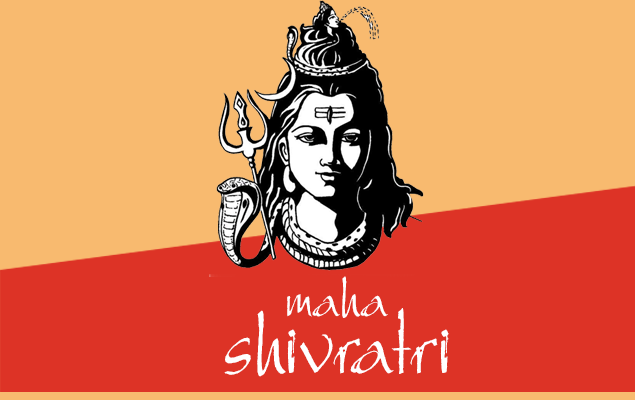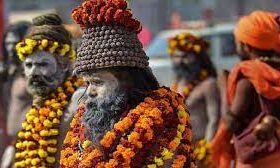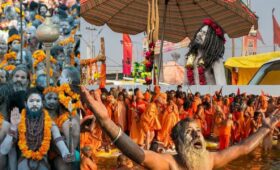Maha Shivratri, the night of the worship of Lord Shiva, occurs on the 14th night of the new moon during the dark half of the month of Phalguna. It falls on Amavasya ( when is shivratri, mahashivratri ? ) http://localhost:80/category/festivals/when Hindus offer special prayer to the lord of destruction. Shivratri (Sanskrit ‘ratri’ = night) is the night when he is said to have performed the Tandava Nritya or the dance of primordial creation, preservation and destruction. The festival is observed for one day and one night only.
Origin of Shivratri:
According to the Puranas, during the great mythical churning of the ocean called Samudra Manthan, a pot of poison emerged from the ocean. The gods and the demons were terrified as it could destroy the entire world. When they ran to Shiva for help, https://www.ima-appweb.com/ he in order to protect the world, drank the deadly poison but held it in his throat instead of swallowing it. This turned his throat blue, and since then he came to be known as ‘Nilkantha’, the blue-throated one. Shivratri celebrates this event by which Shiva saved the world.
A Festival Significant for Women:
Shivratri is considered especially auspicious for women. Married women pray for the well being of their husbands and sons, while unmarried women pray for an ideal husband like Shiva, who is the spouse of Kali, Parvati and Durga. But generally it is believed that anyone who utters the name of Shiva during Shivratri with pure devotion is freed from all sins. He or she reaches the abode of Shiva and is liberated from the cycle of birth and death.
The absolute formless God, Sadashiv appeared in the form of “Lingodbhav Moorti” exactly at midnight on Maha Shivratri. That is why all Shiva devotees keep vigil during the night of Shivratri and do “Shivlingam abhishekham” (coronation of the phallic idol) at midnight.
Shiva Rituals:
On the day of Shivratri, a three-tiered platform is built around a fire. The topmost plank represents ‘swargaloka’ (heaven), the middle one ‘antarikshaloka’ (space) and the bottom one ‘bhuloka’ (earth). Eleven ‘kalash’ or urns, are kept on the ‘swargaloka’ plank symbolizing the 11 manifestations of the ‘Rudra’ or destructive Shiva. These are decorated with the leaves of ‘bilva’ or ‘bael’ (Aegle marmelos) and mango atop a coconut representing the head of Shiva. The uncut shank of the coconut symbolizes his tangled hair and the three spots on the fruit Shiva’s three eyes.
Bathing the Phallus:
The phallus symbol representing Shiva is called the lingam. It is usually made of granite, soapstone, quartz, marble or metal, and has a ‘yoni’ or vagina as its base representing the union of organs. Devotees circumambulate the lingam and worship it throughout the night. It is bathed every three hours with the 5 sacred offerings of a cow, called the ‘panchagavya’ – milk, sour milk, urine, butter and dung. Then the 5 foods of immortality – milk, clarified butter, curd, honey and sugar are placed before the lingam. Datura fruit and flower, though poisonous, are believed to be sacred to Shiva and thus offered to him.
Himalayas & Pilgrimage
The Himalayas in Hindu tradition are much more than a majestic mountain range that extends in a 2,410-km curve across South Asia. Hindus revere it not just for being a home to rare sanative herbs, nor even as a haven for exciting winter sports. To the Hindus this great grandfather-like figure has always been an abode of gods. So they referred to the Himalayas as devatma or God-souled.
Giri-raj or the “King of Mountains”, as the Himalayas is often called, is also a deity by itself in the Hindu pantheon. Hindus view the Himalayas as supremely sacred, as a corollary to seeing god in every atom of the universe. The mighty altitude of the Himalayas is a constant remembrance to the loftiness of the human soul, its vastness. a prototype for the universality of human consciousness. Even Mount Olympus in Greek mythology would pale in front of the reverence shown to the Himalayas in the Hindu mythology. Neither is Mount Fuji as significant to the Japanese as the Himalayas to Hindus.
Pilgrim’s Paradise
Apart from being a natural heritage, the Himalayas is a spiritual heritage for the Hindus. From the Himalayas has originated so many life-giving perennial rivers that have sustained such a rich civilization. The most visited places of pilgrimage in India are located in the Himalayas. Prominent among them are the Nath troika of Amarnath, Kedarnath and Badrinath as well as Gangotri and Yamunotri – the glacial origins of the holy rivers of Ganga and Yamuna. There are also three seminal Sikh pilgrimage spots in the Uttarakhand Himalayas.
Heaven of Spiritual Practices
The western Himalayas teems with esteemed pilgrimages so much so that the entire Garhwal & Kumaun range can be called tapobhumi or land of spiritual practices. Where else apart from Kailash and Manas-sarovar in the Himalayas could an all-abnegating Shiva roam with his bull? Where else apart from Hemkunt Sahib in the Himalayas could Guru Govind Singh have come in his former sagely incarnate for spiritual penance?
Favorite of Gurus & Saints
From times immemorial, the Himalayas have given out speechless invitations to sages, anchorites, yogis, artists, philosophers et al. Shankaracharya (788-820), who propounded the Mayavad doctrine, referred to the holy river as the goddess of divine essence, and established one of the four cardinal hermitages in the Garhwal Himalayas. Scientist J C Bose (1858-1937), also ventured into the Himalayas, as expounded in his sagely philosophical essay Bhagirathir Utsha Sandhane, to explore how the Ganges flows down from the “matted locks of Shiva”. All sages and prophets have found the Himalayas best for spiritual pursuits. Swami Vivekananda (1863-1902) founded his Mayavati Ashram 50 km from Almora. The Mughul emperor Jehangir (1567-1627) said about Kashmir, the westernmost extent of the Himalayas: “If there is a paradise on earth, it’s here”.



